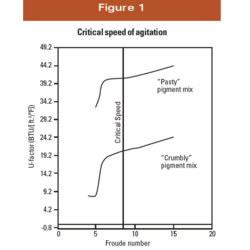Tips for Effective Agitated Vacuum Drying

This article was written by our Product Manager, Shawn Hearn, and published in the April 2018 Edition of Powder & Bulk Engineering.
Effective drying is often a crucial step in many processing operations. In addition to its obvious importance in developing an attractive and useable product, drying is frequently used to facilitate material handling, reduce shipping costs, increase process equipment capacity, and optimize product preservation during shipment and storage.
Vacuum drying is one of the most efficient forms of material drying known. A typical batch-operated vacuum agitated dryer consists of an enclosed drying chamber connected through a condenser to a vacuum system. Steam or another heat-transfer fluid is piped to a jacket surrounding the chamber. Wet material enters the dryer, and the vacuum system reduces drying chamber pressure as the heat-transfer fluid flows through the jacket and, in some cases, the internal mixing elements. These heated surfaces provide indirect-contact drying.
As evaporation occurs and the wet material dries, the vapor is drawn by vacuum up through the dryer’s vacuum stack or jacketed pulse-back filter to a condenser, where the vapor is exposed to low temperatures, condensing it back into a liquid. This condensate flows into a recovery or holding tank for later reuse or disposal. Once the cycle is complete, the dried material is unloaded.
The three major variables that affect the removal of moisture from solids in a vacuum dryer are vacuum level, the available surface area of the material, and the amount and efficiency of the heat-transfer surface area. Optimizing each of these variables is the key to efficient drying.
FULL ARTICLE CONTINUES HERE
More questions about the vacuum drying process? In need of an efficient dryer? We can help!
Fill out the form on the right side of this page or call us at (989) 757-1300 today.
